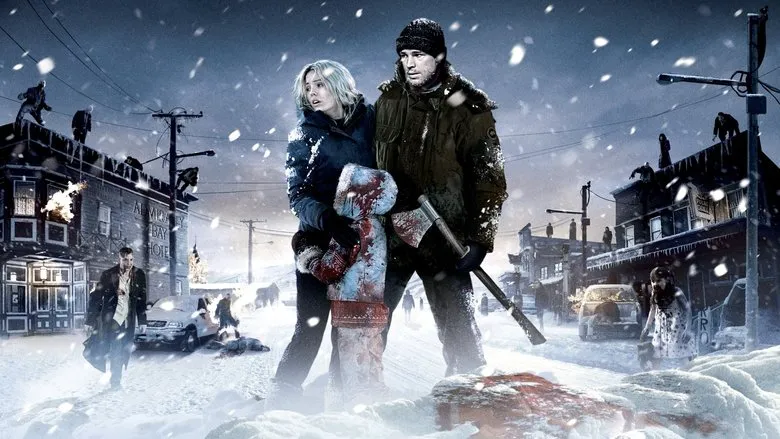30 Days of Night: A Vampire Tale Reimagined
In the remote Alaskan town of Barrow, a polar night descends for a full month, plunging the community into darkness from November to December. This annual occurrence is typically the residents’ primary concern. However, one year, a series of sinister events eclipsed even the oppressive darkness.
First, an unknown assailant pilfered all the townspeople’s cell phones. Then, the community’s beloved sled dogs were found brutally slain. Finally, the town’s power grid was sabotaged, leaving Barrow in complete darkness. Sheriff Oleson (Josh Hartnett), sensing something far more sinister than mere vandalism, soon discovers the horrifying truth. A deranged stranger stumbles into the local bar, proclaiming that the town’s days are numbered. “They” are coming – a horde of savage, merciless creatures – and no one will escape their bloodthirsty fangs.

Reviving the Vampire Genre
The vampire genre, one of cinema’s oldest, had become a pale imitation of its former self over the past century. The terrifying Nosferatu of the 1920s, creatures of pure, animalistic dread, had devolved into suave, tortured souls, then into melancholic addicts, and finally into mere Halloween props. Director David Slade, known for the controversial thriller “Hard Candy” (2006), sought to resurrect vampires to their original, monstrous essence in his adaptation of the comic book “30 Days of Night.” And he succeeds. “There is no God,” one of the infernal invaders coldly states in response to a victim’s desperate prayer. And if that’s the case, then anything is permitted.
A New Breed of Vampire
These new vampires are devoid of all romanticism, eroticism, and any semblance of human appeal. Driven solely by insatiable hunger, they have traveled hundreds of miles for an easy feast. The “undead” communicate in guttural, inhuman sounds, only vaguely resembling human speech, and emit primal screeches during their moments of savage satisfaction. The bloodcurdling cries of these beings (never explicitly named, as if out of superstitious fear) perfectly complement the howling blizzard winds that sweep through Barrow’s darkened streets.
Survival in the Dark
The battle against them is not a sophisticated hunt with trackers and beaters, nor a measured chess game where night’s move is countered by day. Instead, it’s a frantic race for survival in the cold and the dark. The invaders are as impersonal, relentless, and seemingly invincible as the icy elements themselves. Neither crosses, prayers, nor garlic have any effect. But what can save the townspeople? Here, director Slade, slightly altering the comic’s ending, ventures into a romanticism unseen since “Bram Stoker’s Dracula” (1992): love.
Because she is the one who supposedly does not exist.